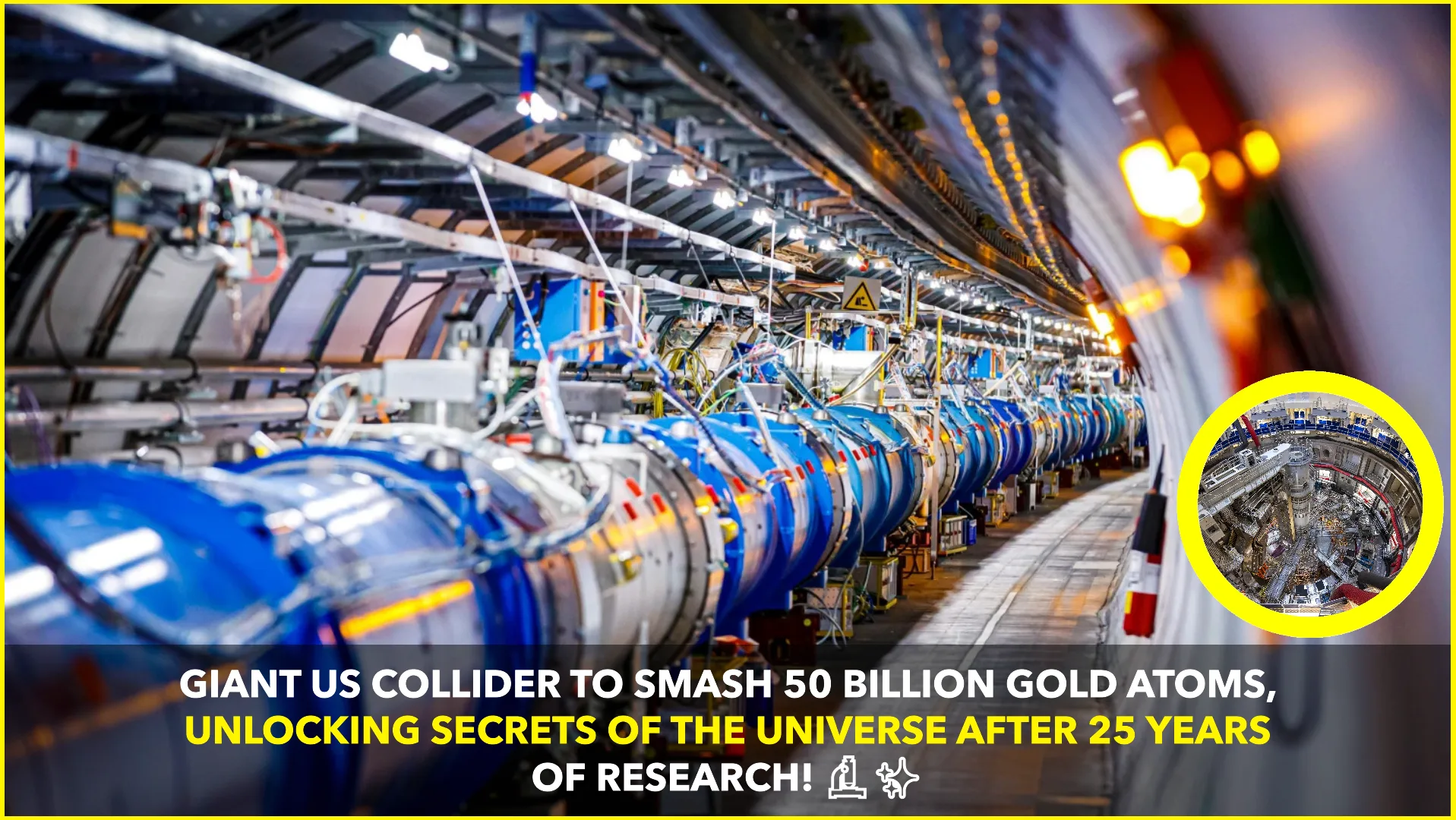In a groundbreaking scientific feat, a giant collider in the United States is set to smash 50 billion gold atoms, marking a significant milestone in particle physics research after 25 years of dedicated effort. This experiment, conducted at the Relativistic Heavy Ion Collider (RHIC) at the Brookhaven National Laboratory in New York, is expected to provide new insights into the fundamental forces of nature and the conditions of the universe in its earliest moments.
A Quarter-Century of Research Culminates in a Historic Experiment
The RHIC, one of the world’s most powerful particle colliders, has been operational since 2000 and has played a crucial role in advancing our understanding of quantum chromodynamics—the theory that describes the strong nuclear force binding quarks and gluons inside protons and neutrons. This latest experiment, which involves smashing gold ions at near-light speeds, is the culmination of over two decades of research and technological advancements.
Physicists aim to recreate conditions similar to those that existed microseconds after the Big Bang. By colliding gold nuclei at temperatures exceeding trillions of degrees, researchers hope to observe a state of matter known as quark-gluon plasma, which is believed to have filled the universe immediately after its formation.
Unraveling the Mysteries of the Universe
The RHIC’s upcoming experiment will involve accelerating and colliding heavy gold ions at incredibly high energies, producing a brief but intense flash of quark-gluon plasma. This will allow scientists to analyze the properties of these fundamental particles and gain a deeper understanding of how matter evolved from the primordial soup into the atoms and molecules that make up everything around us today.
One of the major goals is to examine how quarks and gluons interact when they are no longer confined within protons and neutrons. The insights gained could provide a clearer picture of the strong nuclear force, which is responsible for holding atomic nuclei together. The experiment will also help refine theoretical models that underpin modern physics, possibly challenging existing assumptions about particle interactions and fundamental forces.
Technological and Scientific Breakthroughs
The RHIC has pioneered several advancements in accelerator technology, including the ability to create and study quark-gluon plasma in a controlled environment. The collider’s detectors will capture high-resolution data from the gold ion collisions, enabling scientists to reconstruct the sequence of events that occur in the fractions of a second following impact.
Additionally, the findings from this experiment could complement research conducted at the Large Hadron Collider (LHC) in Switzerland, where physicists have also studied quark-gluon plasma using lead-ion collisions. The RHIC, however, provides a unique approach by allowing greater control over the collision parameters, making it an invaluable asset in particle physics research.
Implications for Future Research
The success of this experiment could open new doors for future research in high-energy physics and cosmology. Understanding the behavior of quark-gluon plasma may shed light on unsolved mysteries such as the nature of dark matter and the fundamental structure of the universe.
Moreover, the technological advancements made during this project could have broader applications, including improvements in medical imaging, radiation therapy, and materials science. Particle accelerators have historically contributed to numerous scientific and industrial innovations, and the knowledge gained from this experiment is expected to have far-reaching benefits beyond fundamental physics.
A Landmark Achievement in Science
As the RHIC prepares to execute this historic collision, the global scientific community eagerly awaits the results. With 25 years of research leading up to this moment, the experiment represents a remarkable achievement in human curiosity and ingenuity. Whether it confirms existing theories or presents new, unexpected findings, this milestone will undoubtedly shape the future of particle physics and our understanding of the universe.
As physicists analyze the data from the experiment, the insights gained will contribute to solving some of the most profound questions about the nature of matter and the origins of the cosmos. This event is not just a triumph for the RHIC and its researchers but also a significant step forward in humanity’s quest to unlock the secrets of the universe.










